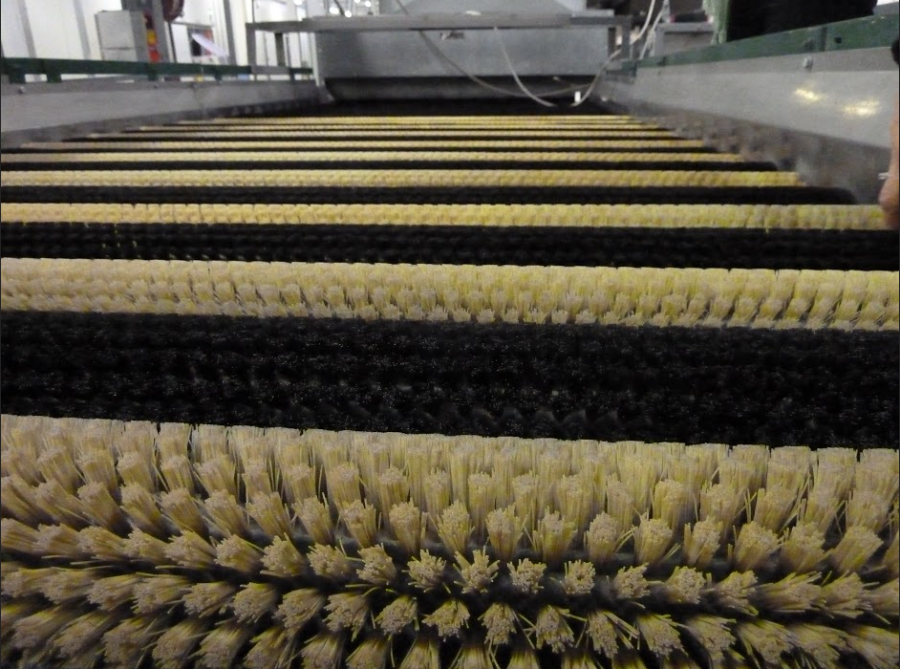How do you like them apples? Preferably free of foodborne pathogens
Siddharth Suri stands beside his locker and crunches into a sliced apple he brought from home. The junior’s mother bought the apple at Trader Joe’s. It looks fresh, crisp and nutritious – and it shouldn’t make him sick, assuming the correct steps were taken from the tree to the lunchbox.
“I eat apples every day,” says Suri.
The Centers for Disease Control estimates that one in six Americans get sick, 128,000 are hospitalized and 3,000 die of foodborne diseases each year. Foods – even apples – can get contaminated when they are produced and prepared.
The Cardinal Times wanted to find out how one local orchard keeps its apples clean and safe for kids like Suri and the rest of us. We visited Oregon Heritage Farm, southwest of Portland, for an eye-opening lesson.
Chelsea McLennan-West manages food safety and operations at the family-owned orchard, which supplies stores like Fred Meyers and Trader Joe’s with apples.
Food safety starts in the fields at Oregon Heritage Farm, where rows and rows of apple trees grow on 250 acres. The ground is hard and cold and workers hand-pick each apple, seven days a week during harvest season.
Once picked, apples are rushed into cold rooms to keep them from perishing, McLennan-West says. When the apples are ready to be processed, workers place them into 800-pound plastic totes, then onto a conveyor.
The fruit is heated and chlorinated to kill E. coli, listeria and other bacteria the apples might have been exposed to in the fields. The conveyor gets filled with a water and chlorine mix and the apples bob along in it gently for three minutes.
“It’s a lazy river for apples,” says Mary McLennan, one of the owners.
Next, apples are fed through a machine that pulls off any remaining leaves and twigs. Six fans dry the fruit as it rolls on the conveyor belt to another washing station. Brushes scrub the apples and coat them in wax.
“The black brushes are for the wax. We usually use shellac here,” says McLennan-West, food safety and operations manager and our guide.
In order that the wax sticks, a dryer heats the apples to 90 degrees. Wax is only for appearances. But consumers want to buy high-gloss apples.
“Every day here is beauty pageant,” McLennan-West says.
Appearance matters, which explains why any rotten apples get tossed. So, too, do ones with significant bruising or bitter pit, a calcium deficiency that doesn’t impact taste but does cause black spots on the skin of the apple.
Grading comes next. A machine spins the apples for a 360 degree picture to analyze the percentage of red, which determines the grade. An Internal Quality Analysis shoots light inside the apples, continuing to weed out the rotten. Suction cups apply stickers one at a time to the apples that make the grade.
“It makes a sound like: Foop, foop, foop,” McLennan-West says.
The apple’s characteristics, where it is and where it will be sent, gets stored in a computer. From there, the apples are sorted into groups, transported down a belt onto a table to the farm’s 30 packers. They fill boxes with 40 pounds of apples with similar characteristic.
The boxes can never touch the ground or they are considered contaminated, so they travel around the room hooked on a conveyor belt. These boxes get packed into larger cardboard boxes, labeled and loaded onto pallets bound for grocery stores or distributors.
A large percentage of the orchard’s harvest goes to Charlie’s Produce in Clackamas, whose main source of apples is Oregon Heritage Farm.
From places like Charlie’s, apples end up in the lunchboxes of thousands of Oregon high school students like Suri. He eats an apple every single day with little knowledge of the long process to keep the apple safe and bacteria-free – and him healthy. His interest is in the taste.

